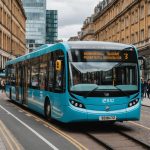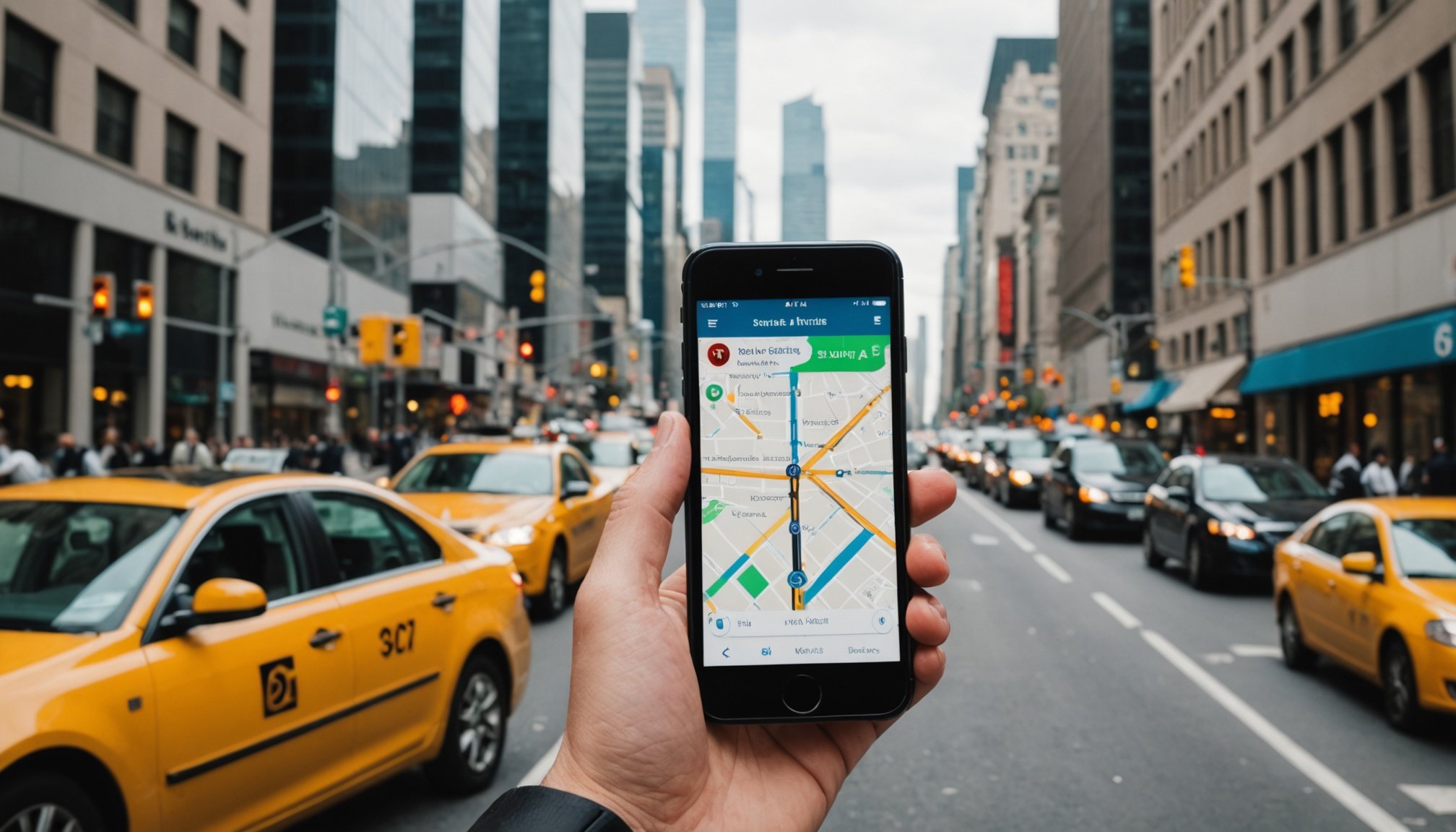Overview of Real-Time Traffic Alerts
In today’s fast-paced world, real-time traffic alerts are indispensable for commuters aiming to enhance their commuting efficiency. These updates provide critical, live information about road conditions, helping individuals plan better routes and avoid potential delays. With the advent of smartphone technology, the way people approach their daily commutes has been revolutionised.
Smartphones have transformed commuting experiences by enabling access to essential traffic information. These devices stream real-time data, offering insights such as traffic jams, accidents, and roadblocks. As a result, commuters can make informed decisions, steering them away from congestions and reducing travel time.
Also to discover : Turn your smartphone into a cutting-edge weather hub for precision forecasting!
When choosing traffic alert apps, several key features should be considered to optimise their usefulness:
- Accuracy and timeliness: Ensure the app provides the latest data for precise decision-making.
- Customisable alerts: Opt for apps that allow personalised settings, aligning with your specific commuting patterns.
- User-friendly interface: An intuitive interface enhances the user experience, ensuring easy navigation to critical alerts.
These features ensure individuals maintain efficient travel patterns, minimising stress and uncertainty. By understanding the vital role of real-time traffic alerts powered by smartphone technology, commuters gain an edge in navigating the complexities of modern transportation networks.
Have you seen this : Ultimate guide to seamless smart home automation: monitor your home in real-time with your smartphone
Recommended Apps for Real-Time Traffic Alerts
When navigating busy streets, choosing the right traffic app can significantly enhance your journey. Modern mobile applications offer various features to cater to different needs and preferences.
Top Free Traffic Alert Apps
Free traffic navigation apps are widely preferred due to their accessibility and cost-free benefits. Popular options often include features like real-time traffic updates, route planning, and community-based information sharing. These applications typically come with user-friendly interfaces, making it easy for anyone to get acquainted with their functionalities. However, it’s important to note that free apps may have limitations, such as ads or restricted coverage areas, which can affect their efficiency in certain locations.
Premium Traffic Alert Solutions
For those seeking enhanced capabilities, premium traffic alert solutions elevate the user experience with advanced features. Subscription-based services often provide ad-free experiences, more accurate traffic data, and integration with other apps or devices. Popular paid options in the market range from basic subscriptions to more comprehensive packages catering to frequent travelers. Comparing these offerings helps in determining the best fit based on your traffic navigation needs.
Niche Traffic Apps for Specific Needs
For commuters with unique requirements, niche traffic apps can be indispensable. Some apps focus on specific regions or transportation modes, such as cycling or public transport. These applications often boast unique features designed to address particular commuting scenarios, like real-time notifications for transit disruptions. Testimonials from diverse user groups frequently highlight the increased convenience and tailored experience these tools provide.
Installation and Setup of Traffic Alert Apps
Downloading and installing a traffic app ensures you stay informed about road conditions. Most apps, whether on iOS or Android, can be found in their respective app stores. Begin by searching your recommended app, and after locating it, tap the install button.
Once installed, understanding mobile app configuration is crucial. Launch the app, and you’ll likely encounter a setup wizard. This assists with configuring app settings to your preferences—such as choosing whether to receive alerts via notifications or email. These steps enhance the user setup process, making sure you’re leveraging the app’s full capabilities.
A critical aspect of setup is granting necessary permissions during the installation. Permissions like location access are vital for receiving accurate alerts. Without such permissions, the app may provide irrelevant or outdated traffic information.
Additionally, some apps offer configuration options to tailor alerts to specific routes or times of day. Taking time to explore these settings can significantly optimize the app’s performance. By following these steps, you can ensure an efficient and responsive traffic app installation process.
Optimizing Notifications for the Best Experience
Fine-tuning your notification settings can significantly enhance your commuting experience. By tailor-making alerts according to your user preferences, you ensure that the information you receive is both relevant and timely.
Customizing Alert Types
Differentiating between various traffic alerts is essential. With well-set notification settings, distinguishing incidents like accidents from mere congestion becomes straightforward. By customising these alerts, you cater to individual commuting patterns, allowing for a seamless integration into daily routines. Furthermore, managing alert frequency mitigates the risk of notification overload, ensuring you only receive critical updates when necessary.
Location-Based Alerts
Using location-based alerts enriches your commute with precision. By configuring geofenced alerts, you can monitor specific areas or routes, ensuring you’re only notified about the traffic conditions that matter to you. Leveraging location history enhances alert relevancy by learning from past routes and patterns, adapting notifications according to frequent paths. When setting up these alerts, consider focusing on historically congested areas or routes prone to regular disruptions. By doing so, you remain one step ahead, maximising commuting efficiency and minimising unpredictability. These tailored approaches and smart technologies ensure a driving experience that is as smooth as possible, keeping you informed without unnecessary distractions.
Integrating Traffic Alerts with Navigation Tools
Traffic alerts can significantly enhance navigation integration for GPS apps, providing real-time data to improve driving efficiency. Popular navigation tools such as Google Maps, Waze, and Apple Maps incorporate live traffic updates. These apps evaluate user-generated data and official sources to alert drivers to congestion, accidents, and road closures.
Benefits of combining traffic data with turn-by-turn navigation include optimized route planning and reduced travel time by avoiding traffic jams. Real-time updates allow drivers to make informed decisions, selecting faster or alternate routes when necessary.
To achieve seamless switching between traffic alerts and navigation applications, consider these tips:
- Enable notifications: Ensure your app settings allow for instant traffic alerts, so you’re aware of any changes as you drive.
- Use hands-free options: Opt for voice-activated commands or Bluetooth connectivity to keep your focus on the road.
- Regular updates: Frequently update apps to access the latest features and enhancements.
By staying informed and using technology that’s at your fingertips, you can enhance your driving experience. These tips help ensure a smoother journey, providing up-to-date insights and directions with minimal fuss.
User Testimonials and Experiences
Personal stories and commuter experiences offer valuable insights into the effectiveness of travel apps. Many users share their journeys of transformation, highlighting significant improvements in their daily commutes. User reviews reveal the myriad ways in which commuters have leveraged these tools to enhance their travel efficiency.
Case Studies: Successful Commuters
Several commuters have reported profound changes by integrating travel apps into their routines. These success stories often emphasize the importance of early planning and route customisation. For instance, Sarah, a busy mum, found that using real-time traffic updates halved her travel times. Such strategies, frequently observed across user reviews, become essential themes in these personal stories. Commuters also share advice, like setting route alerts, which help avoid last-minute delays.
Comparisons of Popular Options Based on User Feedback
When evaluating different apps, user feedback is critical. Reviews often rate features like ease of use, accuracy of information, and functionality. A trend emerges where users prefer apps offering live updates and intuitive interfaces. Reviewing these testimonials collectively, it’s apparent that real-life usage stories strongly influence app performance perceptions. Ratings highlight user preferences and help others in deciding the best suitable app.
Practical Tips for Using Traffic Alerts During Commutes
Integrating traffic alerts into your morning routine can significantly improve your daily commute and reduce stress. Begin by setting up notifications on your chosen traffic app. Check these alerts while getting ready, as well as right before departure. This simple step allows you to foresee potential traffic congestion and adjust your travel plans accordingly.
One effective strategy is to utilize real-time data from your traffic app to make informed decisions. Receiving up-to-date information lets you adapt your route if necessary, avoiding unexpected delays. This approach not only saves time but enhances travel efficiency and contributes to a more relaxed journey.
Moreover, embrace adaptability by staying open to changing routines based on road conditions. For instance, if a major traffic jam is reported, consider alternative routes or modes of transport like public transit or carpooling. This flexibility allows you to maintain control over your schedule, helping you arrive on time and with less hassle.
By actively using commuting tips and traffic alert services, you can optimize your daily travels. These efficient travel advice strategies can transform commuting from a source of frustration into a manageable and even enjoyable part of your day.











